Moderate overlap front: original test
Rating applies to 2008-09 models
Tested vehicle: 2008 Mercedes-Benz C 300 4-door
The Mercedes-Benz C-Class was redesigned for the 2008 model year. Two moderate overlap frontal tests of the C-Class were conducted, one by the Institute and the other by Mercedes-Benz. The overall rating of Good is based on review of both tests, which independently result in overall ratings of Good. The ratings, photos, and videos from the Institute’s test are shown.
| Evaluation criteria | Rating |
|---|---|
| Overall evaluation | |
| Structure and safety cage | |
| Driver injury measures | |
| Head/neck | |
| Chest | |
| Leg/foot, left | |
| Leg/foot, right | |
| Driver restraints and dummy kinematics | |
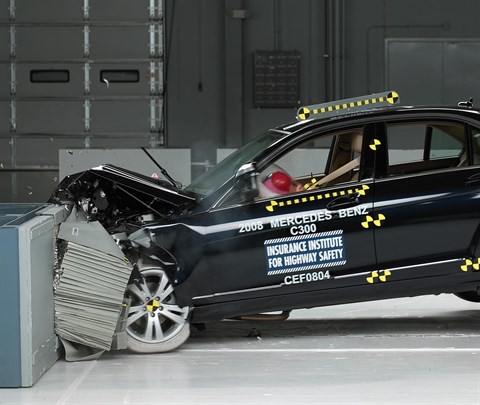
Action shot taken during the Institute's moderate overlap frontal crash test.
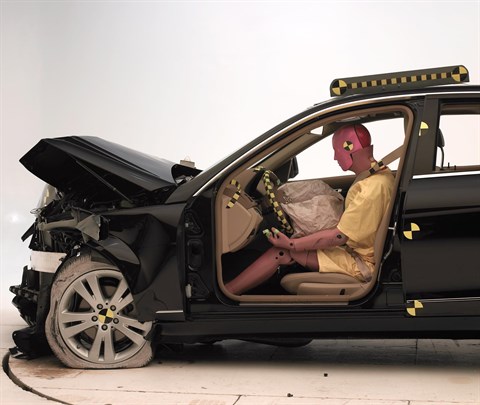
The dummy's position in relation to the steering wheel and instrument panel after the crash test indicates that the driver's survival space was maintained very well (Institute test car shown).
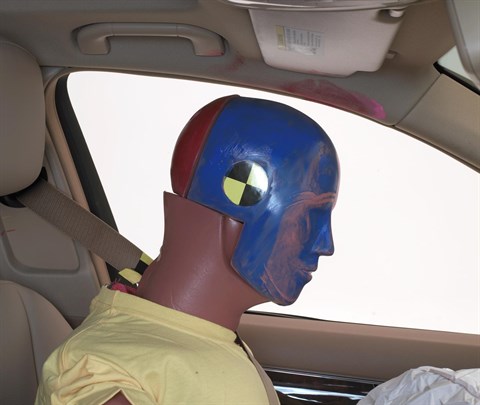
Dummy movement was well controlled in both tests. During rebound, the dummy's head hit the roof rail, as indicated by smeared greasepaint in the Institute's test.
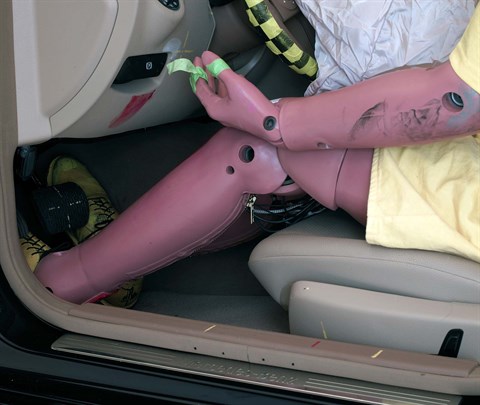
Forces on the left knee were high enough to indicate the possibility of injury in the Institute's test (shown). In Mercedes' test, forces on the right lower leg were just above the threshold indicating the possibility of injuries.
Side: original test
Rating applies to 2009-14 models
Tested vehicle: 2009 Mercedes-Benz C 300 4-door with standard front and rear head curtain airbags and standard front seat-mounted torso/pelvis airbags
The Mercedes-Benz C-Class was redesigned for the 2008 model year. Beginning with 2009 models, the front-seat mounted side torso airbags were modified to include an additional chamber to protect the pelvis in side-impact crashes.
| Evaluation criteria | Rating |
|---|---|
| Overall evaluation | |
| Structure and safety cage | |
| Driver injury measures | |
| Head/neck | |
| Torso | |
| Pelvis/leg | |
| Driver head protection | |
| Rear passenger injury measures | |
| Head/neck | |
| Torso | |
| Pelvis/leg | |
| Rear passenger head protection | |
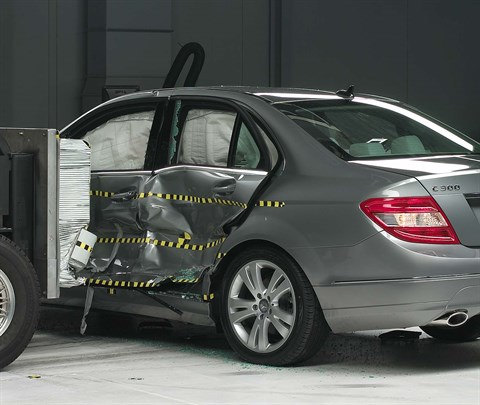
View of the vehicle and barrier just after the crash test.
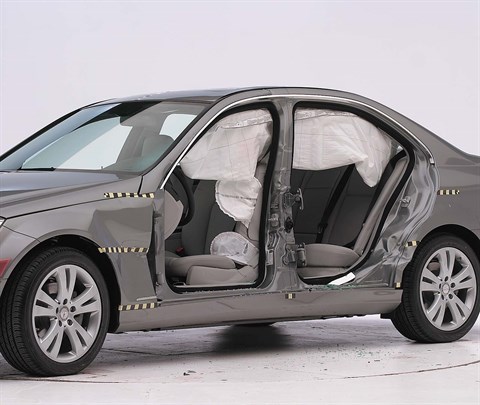
View of the vehicle after the crash with doors removed, showing the side airbags and damage to the occupant compartment.

Smeared greasepaint shows where the driver dummy's head was protected from being hit by hard structures by the side airbags.
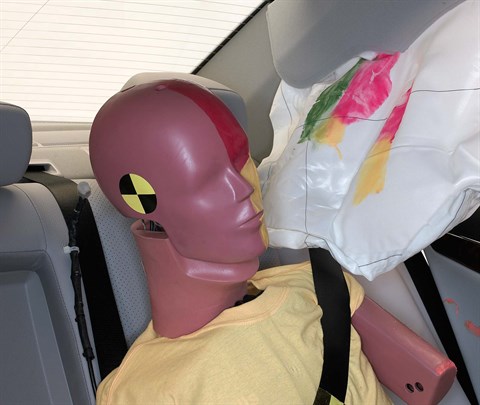
Smeared greasepaint shows where the rear passenger dummy’s head was protected by the side airbag.
Roof strength
Rating applies to 2008-14 models
Tested vehicle: 2010 Mercedes-Benz C 300 4-door
| Overall evaluation | |
|---|---|
| Curb weight | 3,510 lbs |
| Peak force | 18,826 lbs |
| Strength-to-weight ratio | 5.36 |
Head restraints & seats
Seat type: Power leather seats AHR
| Overall evaluation | |
|---|---|
| Dynamic rating | |
| Seat/head restraint geometry |
About the head restraint & seat test
Currently, IIHS tests apply only to front seats.
